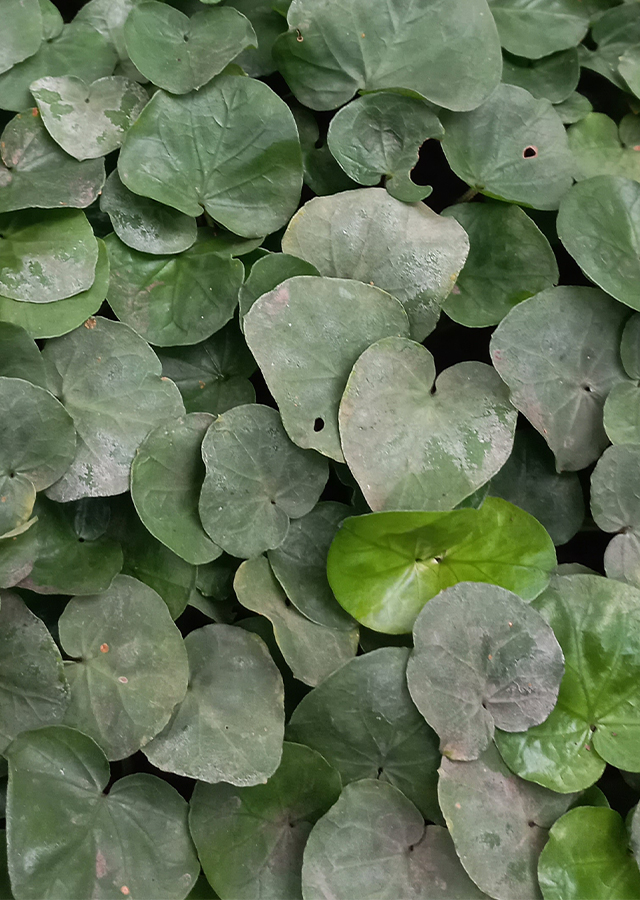Traditional Herbs from Geophila repens
cough
- Take the leaves\u00a0geophila repens\u00a0then wash them thoroughly with running water.
- Boil the leaves\u00a0in water until boiling.
- Strain the boiled product.
- Drink while it's warm.
What is Geophila repens Looks like??



Parts of Geophila repens that could be used
- Leaves
- Fruit
- All Parts of the Plant
Geophila repens Distribution
Geophila repens is widespread in tropical and subtropical areas of Africa, Asia, through the Pacific to America and the Caribbean. This plant is used as a ground cover plant because this plant forms dense colonies in shady places. This plant has been widely used as traditional medicine in various countries, such as Peninsular Malaysia, Thailand, Africa and Paraguay. In Peninsular Malaysia, the plant is used externally for poultices for sore feet, and internally to treat diarrhea. In Thailand, a decoction of the whole plant is considered a diuretic and fever reducer. In Africa, the leaves are eaten as a vegetable by barren women suffering from stomach problems and anemia, and by convalescents to restore strength and fertility, it is also used in baths to cure babies with fever, and to treat inflamed eyes. In Paraguay G. repens is used in traditional medicine for the treatment of skin diseases.Agroecology of Geophila repens
G. repens lives in lowland forests, in areas that are not too dry, usually below 1,000 m above sea level, but sometimes up to 1,600 m above sea level. Grows best in the shade of tropical and subtropical forests. Prefers humus-rich soil. Succeeds in moist to wet soil. Sometimes found as a weed in banana plantations.�
Morphology of Geophila repens
- Stems rectangular to terete, glabrous, with roots at nodes, 25-35 cm long, reproductive branches ascending, 10-15 cm high. Stipules interpetiolar, broadly ovate, 1.5 mm long, 2.0 mm wide, persistent.
- Leaves opposite; petioles 2.4-6.8 cm long, with stripes of broadly ciliated trichomes, 1.8-2.5cm long, 2.5-3.8 cm wide, basal heart-shaped, small parts intact, rounded apically, membranous when dry, glabrous on both surfaces, secondary veins 3-4 pairs. Inflorescence 2-3 flowering cymes, puberulent to glabrous; pedicel 2-3.4 cm long; bracts 2, lanceolate to narrow triangular, 5-6 mm long.
- Flowers bisexual, actinomorphic; mm; calyx puberulent to glabrous, sepals 5, 3-4 mm long, linear to narrowly lanceolate, corolla white, smooth puberulous to glabrous outside, glabrous inside, corolla tube 9-10 mm long, lobes 5, 5- 6 mm, narrowly ovate to broadly lanceolate, pointed 5 stamens, anthers dorsifix, 2 mm long, inserted into corolla tube. Ovary ellipsoid, diameter 1.5-2.0 mm, 2-celled, 1 ovule in each cell, length 5-6 mm, stigma discoid.
- Fruit drupe red, round, fleshy, with fixed calyx legs, diameter 5- 7 mm, hairy\u00a0to fine; pyrenes hard, plano-convex, dorsal smooth to shallow rugulose, ventral with moderate ridge and 2 submerginal longitudinal grooves.
- Seeds are medium, testa membranaceous, endosperm corneous.
Cultivation of Geophila repens
Propagated generatively by seeds and vegetatively by stem cuttings and micropropagation.
Geophila repens, more details :
Chemical Content of Geophila repensSesquiterpene hydrocarbons, oxygenated sesquiterpenes, monoterpene hydrocarbons, diterpenes, oxygenated monoterpenes, β-caryophyllene, β-elemene, farnesyl butanoate, myrcene, trans-nerolidol, and α-caryophyllene.
Benefits of Geophila repens
Cures coughs, effective antifungal agent, poultices for sore feet, treats diarrhea, reduces heat (fever) especially in babies, treats stomach problems and anemia for barren women, restores strength and fertility, treats inflamed eyes, treats skin diseases, is diuretic.
Simplisia of Geophila repens
Another Facts for Geophila repens :
Synonym of Geophila repensCarinta repens (L.) L.B.Sm. & DownsCephaelis reniformis KunthGeocardia repens (L.) Bakh.f.
Habitus of Geophila repens
Herb. Annual herb, height 0.1 m
Habitat of Geophila repens
- Forest
No comments:
Post a Comment